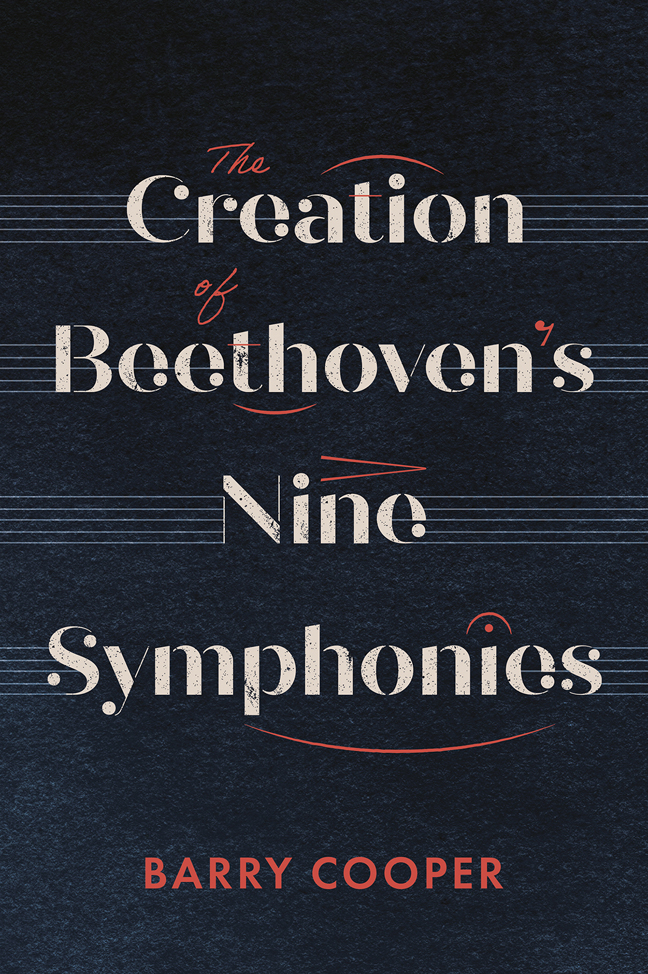Book contents
- Frontmatter
- Contents
- List of music examples
- List of tables and figures
- Preface and acknowledgements
- Abbreviations
- Introduction
- 1 The Long and Hazardous Road to the First Symphony, Op. 21
- 2 A Creation in Two Parts: The Second Symphony, Op. 36
- 3 Elevating the Genre: The Third Symphony (Eroica), Op. 55
- 4 The Oppersdorff Connection: The Fourth Symphony, Op. 60
- 5 Motivic Intensity: The Fifth Symphony, Op. 67
- 6 ‘More an Expression of Feeling than Painting’: The Sixth Symphony (Pastoral), Op. 68
- 7 ‘Great, Exalted’ Work: The Seventh Symphony, Op. 92
- 8 ‘Just Because it is Much Better’: The Eighth Symphony, Op. 93
- 9 The Philharmonic Connection: The Ninth Symphony, Op. 125
- 10 Epilogue
- Bibliography
- Index of Music Manuscripts
- Index of Beethoven’s Works
- General Index
4 - The Oppersdorff Connection: The Fourth Symphony, Op. 60
Published online by Cambridge University Press: 02 March 2024
- Frontmatter
- Contents
- List of music examples
- List of tables and figures
- Preface and acknowledgements
- Abbreviations
- Introduction
- 1 The Long and Hazardous Road to the First Symphony, Op. 21
- 2 A Creation in Two Parts: The Second Symphony, Op. 36
- 3 Elevating the Genre: The Third Symphony (Eroica), Op. 55
- 4 The Oppersdorff Connection: The Fourth Symphony, Op. 60
- 5 Motivic Intensity: The Fifth Symphony, Op. 67
- 6 ‘More an Expression of Feeling than Painting’: The Sixth Symphony (Pastoral), Op. 68
- 7 ‘Great, Exalted’ Work: The Seventh Symphony, Op. 92
- 8 ‘Just Because it is Much Better’: The Eighth Symphony, Op. 93
- 9 The Philharmonic Connection: The Ninth Symphony, Op. 125
- 10 Epilogue
- Bibliography
- Index of Music Manuscripts
- Index of Beethoven’s Works
- General Index
Summary
Adagio – Allegro vivace
Adagio
Menuetto: Allegro vivace – Trio: Un poco meno allegro – Tempo I [etc.]
Allegro ma non troppo
Genesis and context
Beethoven had originally planned the Eroica Symphony as one of two that were to be offered to Breitkopf & Härtel. After completing it in autumn 1803, however, he turned to other works: first the opera Vestas Feuer, which he quickly abandoned, and then to piano sonatas, the Triple Concerto and most notably the opera Leonore or Fidelio. These occupied much of the remainder of the sketchbook Landsberg 6, which was finished around the end of March 1804; but at a stage when plans for the opera were held up or in abeyance, he inserted a few new ideas for what was intended to be his next symphony. They are in C minor and eventually emerged in the Fifth (see the next chapter). He also noted down in the sketchbook a few tentative ideas that were later absorbed into the Sixth (Pastoral), but there is no sign of the Fourth here. His next known sketchbook, Mendelssohn 15, contains no confirmed sketches for any symphony. It was probably begun about July 1804, for there is a significant gap in the sketch record for Leonore between the sketches for its earliest numbers (up to No. 5) in Landsberg 6 and sketches for No. 12 onwards in Mendelssohn 15. Although the latter contains sketches for the Triple Concerto, which had been performed on or before 11 June, as noted in the previous chapter, these sketches must postdate the original performance and reflect a very thorough revision that the concerto received thereafter. Such a revision is confirmed by a violin part for the original version, which differs markedly from the one eventually published.
Between Landsberg 6 and Mendelssohn 15 there may be a lost sketchbook containing Nos. 6-11 of Leonore, but Beethoven also used loose leaves, including a batch of ten that has since been split up and resides in four different locations. The batch has been dated to around April–June 1804, since it includes sketches for two Petrarch sonnets in a translation that was not published until 24 May 1804. Late May–July would seem more likely, however, since there are no sketches for the Triple Concerto.
- Type
- Chapter
- Information
- The Creation of Beethoven's Nine Symphonies , pp. 94 - 110Publisher: Boydell & BrewerPrint publication year: 2024

